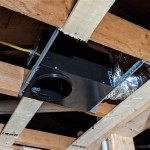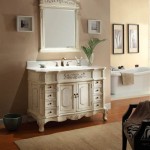Stand Alone Bathroom Sink Cabinets: A Comprehensive Guide
Stand alone bathroom sink cabinets, also known as vanity cabinets, offer a practical and stylish solution for bathroom storage and sink integration. Unlike pedestal sinks, which provide minimal storage, or built-in vanities that require extensive installation, stand alone cabinets combine the functionality of a sink with dedicated storage space, all within a self-contained unit. This article explores the various aspects of stand alone bathroom sink cabinets, including their benefits, types, selection criteria, installation considerations, and maintenance tips.
Benefits of Stand Alone Bathroom Sink Cabinets
The popularity of stand alone bathroom sink cabinets stems from several key advantages they offer compared to alternative sink and storage solutions. These advantages impact bathroom functionality, aesthetics, and overall value.
Enhanced Storage: The primary benefit is the increased storage capacity. Stand alone cabinets typically feature drawers, shelves, or a combination thereof, providing ample space for storing toiletries, towels, cleaning supplies, and other bathroom essentials. This helps to declutter the bathroom, keeping countertops clear and organized. The configuration of storage often allows for customization to suit individual preferences and needs.
Style Versatility: Stand alone cabinets are available in a wide array of styles, ranging from traditional to contemporary, rustic to modern. This diverse selection ensures that homeowners can find a cabinet that complements their existing bathroom décor and personal taste. The variety encompasses different materials, finishes, hardware, and design elements, allowing for seamless integration into diverse bathroom aesthetics.
Ease of Installation: Compared to built-in vanities, stand alone cabinets are generally easier to install. Many models come pre-assembled, requiring only the connection of plumbing and securing the unit to the wall. This simplified installation process can save time and money, particularly for DIY enthusiasts. Even when professional installation is preferred, the process is typically less complex and less disruptive than installing a fully custom vanity.
Cost-Effectiveness: While the initial cost of a stand alone cabinet can vary depending on the material, size, and brand, it often represents a more cost-effective solution than custom-built vanities. The availability of ready-made options and simplified installation contribute to overall cost savings. Furthermore, the increased storage and organization can potentially reduce the need for additional storage solutions in the bathroom, further enhancing cost-effectiveness.
Improved Aesthetics: Stand alone cabinets can significantly enhance the overall aesthetics of a bathroom. They serve as a focal point, adding visual interest and character to the space. The selection of a stylish and well-designed cabinet can elevate the bathroom's appearance, creating a more inviting and appealing environment. The integrated sink and storage create a cohesive and refined look, contributing to a more polished and intentional design.
Space Optimization: Stand alone cabinets are available in various sizes and configurations, making them suitable for bathrooms of all sizes. Smaller cabinets are ideal for compact spaces, while larger cabinets provide ample storage for larger bathrooms. The ability to choose a cabinet that fits the specific dimensions of the bathroom ensures optimal utilization of available space. Some models are specifically designed for corner placement or tight spaces, maximizing functionality in challenging layouts.
Types of Stand Alone Bathroom Sink Cabinets
The market offers a diverse range of stand alone bathroom sink cabinets, categorized by style, material, and configuration. Understanding these different types is crucial for selecting the most appropriate cabinet for a specific bathroom.
Traditional Style: Traditional cabinets typically feature ornate details, raised panel doors, and classic hardware. They often incorporate elements such as carved moldings, scrolled feet, and antique-inspired finishes. These cabinets evoke a sense of elegance and sophistication, complementing traditional bathroom décor. Common materials include solid wood and wood veneers.
Modern Style: Modern cabinets are characterized by clean lines, minimalist designs, and sleek surfaces. They often feature flat-panel doors, integrated handles, and geometric shapes. Modern cabinets emphasize functionality and simplicity, creating a contemporary and uncluttered look. Common materials include engineered wood, glass, and metal.
Rustic Style: Rustic cabinets embrace natural materials, distressed finishes, and organic textures. They often incorporate elements such as reclaimed wood, exposed hardware, and weathered surfaces. Rustic cabinets evoke a sense of warmth and authenticity, complementing rustic or country-style bathroom décor. Solid wood is a primary material, often with visible knots and grain patterns.
Contemporary Style: Contemporary cabinets blend elements of modern and traditional styles, creating a balanced and versatile aesthetic. They often feature clean lines with subtle curves, a mix of materials, and updated hardware. Contemporary cabinets offer a timeless appeal, suitable for a wide range of bathroom designs. Materials can include wood, metal, and composite materials.
Single Sink Cabinets: These cabinets are designed for a single sink basin and are ideal for smaller bathrooms or powder rooms. They come in various sizes and styles, offering a compact and efficient storage solution.
Double Sink Cabinets: These cabinets feature two sink basins and are ideal for larger bathrooms, particularly master bathrooms. They provide ample space for two people to use the sink simultaneously, reducing congestion and improving functionality.
Wall-Mounted Cabinets: These cabinets are mounted directly to the wall, creating a floating effect. They offer a modern and space-saving design, making them suitable for smaller bathrooms. Wall-mounted cabinets also facilitate easier cleaning underneath the unit.
Freestanding Cabinets: These cabinets stand directly on the floor, providing a stable and traditional look. They are available in various sizes and styles and are suitable for most bathroom layouts.
Selection Criteria for Stand Alone Bathroom Sink Cabinets
Choosing the right stand alone bathroom sink cabinet involves considering several factors, including size, material, style, storage needs, and budget. A careful evaluation of these criteria ensures that the selected cabinet meets the specific requirements of the bathroom and the homeowner.
Size and Dimensions: Measure the available space in the bathroom to determine the appropriate size of the cabinet. Consider the width, depth, and height to ensure that the cabinet fits comfortably and allows for adequate clearance around it. Account for the swing of the door and drawers when planning the placement.
Material: The material of the cabinet affects its durability, appearance, and maintenance requirements. Solid wood cabinets offer durability and a classic look but are more expensive and require more maintenance. Engineered wood cabinets, such as MDF or plywood, are more affordable and resistant to moisture but may not be as durable as solid wood. Consider the humidity levels in the bathroom when selecting the material.
Style and Design: Choose a cabinet style that complements the existing bathroom décor and personal taste. Consider the color, finish, hardware, and overall design to ensure a cohesive and aesthetically pleasing look. Pay attention to the details, such as the shape of the sink basin and the design of the handles.
Storage Needs: Assess the storage needs of the bathroom and choose a cabinet that provides adequate space for toiletries, towels, cleaning supplies, and other essentials. Consider the configuration of drawers, shelves, and doors to maximize storage efficiency. Look for cabinets with adjustable shelves or specialized organizers to customize the storage space.
Sink Type: The type of sink is a critical consideration. Undermount sinks require a specific cabinet design to support the sink from below. Vessel sinks sit on top of the counter, requiring a cabinet with a flat surface. Integrated sinks are often part of the cabinet design, offering a seamless and streamlined look. Ensure that the cabinet is compatible with the chosen sink type.
Budget: Set a budget for the cabinet and explore options within that price range. Consider the long-term value and durability of the cabinet when making a decision. Balancing cost with quality is essential to ensure a satisfactory investment.
Plumbing Considerations: Ensure that the cabinet is compatible with the existing plumbing connections. Consider the location of the water supply lines and drainpipe when selecting the cabinet. Modifications to the plumbing may be necessary, so it is advisable to consult with a qualified plumber.
Hardware: The hardware, such as handles and knobs, can significantly impact the appearance of the cabinet. Choose hardware that complements the style of the cabinet and is durable enough to withstand daily use. Consider the finish and material of the hardware to ensure it matches the overall aesthetic.
Countertop Material: The countertop material is another important consideration. Popular options include granite, marble, quartz, and solid surface materials. Each material has its own advantages and disadvantages in terms of durability, maintenance, and cost. Choose a countertop material that is both aesthetically pleasing and functional for the bathroom.
Installation and Maintenance
Proper installation and regular maintenance are crucial for ensuring the longevity and performance of stand alone bathroom sink cabinets. Adhering to best practices for installation and implementing a consistent maintenance routine can prevent damage and prolong the lifespan of the cabinet.
Installation Procedures: The installation process typically involves connecting the plumbing, securing the cabinet to the wall, and installing the sink and countertop. Follow the manufacturer's instructions carefully to ensure proper installation. If unsure, it is advisable to hire a qualified plumber or contractor to perform the installation.
Plumbing Connections: When connecting the plumbing, ensure that all connections are secure and leak-free. Use Teflon tape on threaded connections to prevent leaks. Check for leaks after installation by running the water and inspecting the connections.
Securing the Cabinet: Secure the cabinet to the wall using appropriate fasteners. This prevents the cabinet from tipping over and provides stability. Use a level to ensure that the cabinet is installed straight and plumb.
Regular Cleaning: Clean the cabinet regularly with a mild soap and water solution. Avoid using abrasive cleaners or harsh chemicals, as they can damage the finish. Wipe up spills immediately to prevent stains.
Moisture Control: Control moisture levels in the bathroom to prevent damage to the cabinet. Ensure that the bathroom is well-ventilated and use a dehumidifier if necessary. Wipe down surfaces after showering or bathing to remove excess moisture.
Hardware Maintenance: Tighten loose hardware and replace damaged or worn hardware as needed. Lubricate hinges and drawer slides to ensure smooth operation. Clean hardware regularly to remove dirt and grime.
Surface Protection: Protect the countertop from scratches and stains by using coasters and trivets. Avoid placing hot items directly on the countertop. Use cutting boards when preparing food on the countertop.
Periodic Inspection: Inspect the cabinet periodically for signs of damage, such as cracks, chips, or water damage. Repair any damage promptly to prevent further deterioration. Check for mold or mildew growth and address it immediately.

Vanities Furniture Style Vs Traditional Cabinet Toulmin Kitchen Bath Custom Cabinets Kitchens And Bathroom Design Remodeling In Tuscaloosa Birmingham Alabama

Classic Free Standing Vanity Bathroom Unit With Ceramic Sink Oak 80cm Impact Furniture

Kleankin Pedestal Sink Storage Cabinet Bathroom Under With 2 Doors And Open Shelf Vanity Grey 834 431gy The Home Depot

Bathroom Vanity Styles To Fit Your Space Forbes Home
How To Install Free Standing Bathroom Vanities

Home Decorators Collection Fremont 72 In W X 22 D 34 H Double Sink Freestanding Bath Vanity Navy Blue With Gray Granite Top Tj Ftv7222blu The Depot

High Quality Vanity Units For Your Bathroom Bathrooms

35 Best Bathroom Vanities 2024

48 Black Freestanding Single Farmhouse Sink Bathroom Vanity With Ceramic Top Homary

1500mm Bathroom Vanities Storage Bathware Direct
Related Posts







